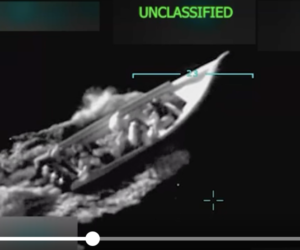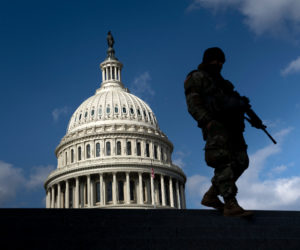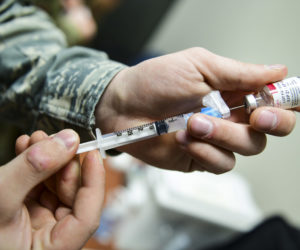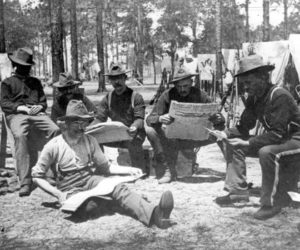On a recent flight to Washington, D.C., I picked up the Southwest Airlines in-flight magazine to pass the time.
The photo on the front cover told me that this time I would be doing much more than just “passing the time away.”
As it turned out, reading the article, “Pain and Elegance,” left me almost in tears and, at the same time, with the deepest respect and admiration for Oksana Masters, a beautiful Ukraine-born young woman who had both her legs amputated above the knee when she was a young girl, who “had a childhood out of Dickens and [who] rose to be a world-class Paralympian,” according to the touching article in Spirit.
Today in London, Oksana with her rowing partner, retired Marine Sergeant Rob Jones — also a bilateral above-the-knee knee amputee after being injured in Afghanistan in 2010 — won the bronze medal in the trunk and arms mixed double sculls rowing event at the 2012 Paralympic Games. It is the first Paralympic medal in the trunk and arms mixed double sculls event for Team USA, according to www.teamusa.org.
Rob Jones said he chose rowing as a sport because it has the combination of ferocious effort harmonized with delicate technique. Jones lists his most memorable sporting achievements as finishing a national triathlon and winning the trunk and arms double sculls at the Non-Qualified Paralympics Trials. Among his other hobbies, he also enjoys reading, biking and stand-up comedy.
Congratulations to Marine Sergeant Jones and to his beautiful and talented partner, Oksana Masters.
Read more about Rob and Oksana here
In other Paralympics developments:
Army veteran Dugie Denton aims his bow during the Men’s Individual Open Compound Quarterfinals archery match in the 2012 Paralympic Games at the Royal Artillery Barracks in London, Sept. 2, 2012. Denton lost the match to American teammate Matthew Stutzman – known as “The Armless Archer”, right in photo below. The retired soldier deals with effects from a traumatic brain injury, has reduced balance from a past ruptured eardrum, and had a plate put in his ankle after being shot during his military service.(DOD photos by Army Sgt. 1st Class Tyrone C. Marshall Jr.)
_._._._._
Navy Lt. Bradley Snyder, a member of the 2012 U.S. Paralympic Swim Team, is greeted by his coach, Brian Loeffler, after winning the qualifying round of the 100-meter freestyle swim during the 2012 Paralympic Games in London, Aug. 30, 2012. Snyder won the event with a Paralympic record time of 57.18 seconds (below, fifth lane from the top), and later earned the gold medal in the event’s final round. (DOD photo by Army Sgt. 1st Class Tyrone C. Marshall Jr.)
American Forces Press Service’s Army Sgt. 1st Class Tyrone C. Marshall Jr.tells us:
The Navy lieutenant, who was blinded while attempting to disable an improvised explosive device in Afghanistan on Sept. 7, 2011, will now face what he considers his flagship event on the anniversary of the accident.
“The anniversary of my accident will be next Friday,” he pointed out. “I’ll be competing in my primary event, 400 freestyle. I’m really looking forward to it.”
Army Sgt. 1st Class Joshua Olson, center, a member of the 2012 U.S. Paralympic shooting team, makes adjustments to his air rifle during a competitive round of shooting at the Royal Artillery Barracks in London, Sept. 1, 2012. (DOD photo by Army Sgt. 1st Class Tyrone C. Marshall Jr.)
Army Sgt. 1st Class Joshua Olson has a very interesting background. According to American Forces Press Service’s Army Sgt. 1st Class Tyrone C. Marshall Jr.:
A sharpshooting Army sergeant who helped to usher in an innovative prosthesis that has helped countless wounded warriors has brought his sharp eye to compete in the 2012 Paralympic Games here.
Army Sgt. 1st Class Joshua Olson was wounded in Iraq by a rocket-propelled grenade during an ambush and has helped to develop an advanced prosthesis for wounded service members, the “Olson Socket.”
[:]
In discussing the origin of the “Olson Socket,” the Army sergeant is quick to note he didn’t invent the prosthesis himself.
“I was just the first guy to wear it and help make it work,” Olson explained. “In late 2004, I went down to Orlando, Fla., where Prosthetics and Associates is, and [met] a gentleman by the name of Dennis Clark.”
“Those guys got together [with] myself and the actual designers, and originally drew it up on a bar napkin,” he revealed. “And we tried it out, and we put it together and made it work.”
Olson said as soon as he got back to Walter Reed with the prosthesis, officials there immediately began sending service members down to Florida to be fitted for the same prosthesis and socket system.
[:]
Olson credited his military service for the discipline that got him here to compete in the Paralympic Games.
“Military service has prepared me for the Paralympics by teaching me determination, patience and just overall hard work,” he said. “My goal for the Paralympics is to be able to perform my best – to perform at the level I know I can. If I do that, I should be on the medal stand.”
The key to his success, Olson said, is practicing, staying focused and concentrating on the fundamentals of his sport.
[:]
“I’ve been training a long time for this,” he added. “There’s really no shooting drill, no mental exercise or anything you can really do to prepare for actually sitting there.”
Olson’s next Paralympic Games shooting event is scheduled for Sept. 4 at the Royal Artillery Barracks.
All images, including banner, and captions courtesy DOD























